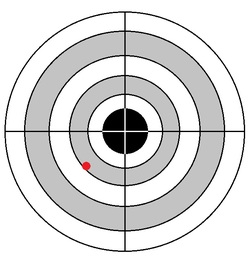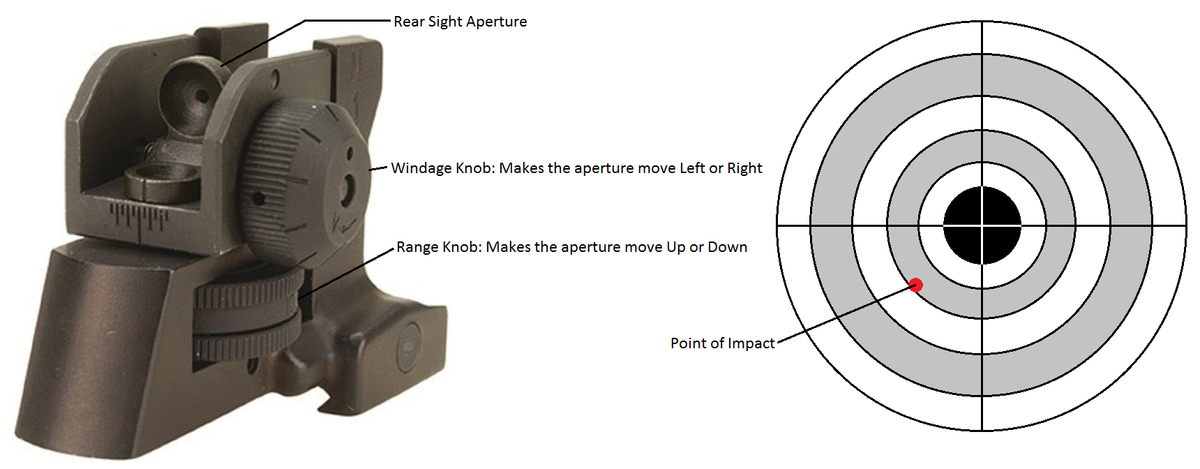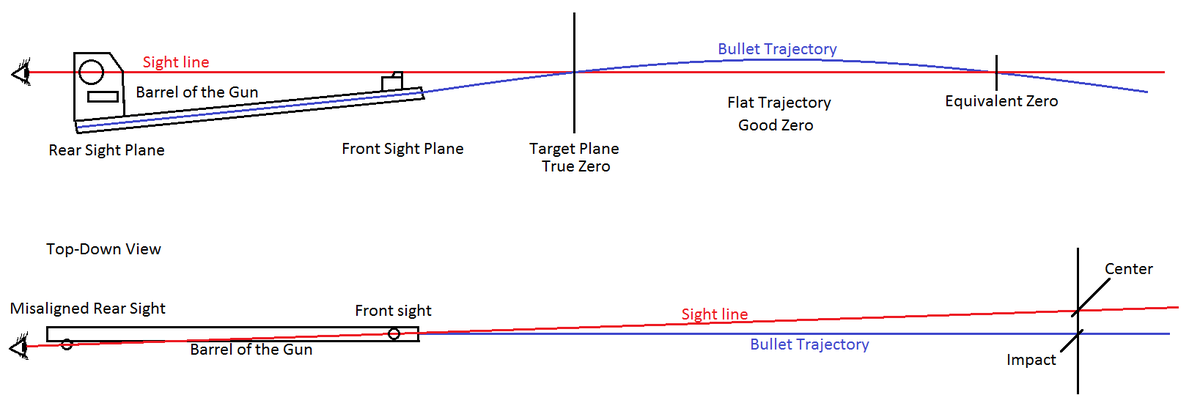Aiming Straight
 A sporting shooter is calibrating the sights in his rifle.
The weapon is fixated to a bench, in a way the sight picture is centered with the target rings.
Now, he fires a single round, that hits left and low from the target's center.
A sporting shooter is calibrating the sights in his rifle.
The weapon is fixated to a bench, in a way the sight picture is centered with the target rings.
Now, he fires a single round, that hits left and low from the target's center.

He has positioned the target 15 meters away, knowing his rifle characteristics and those of the ammunition he uses, the shooter can obtain a flat trajectory up to 300 m, making Gravity not a factor to be taken into account.
So, in order to get his sights right, how should he move the rear aperture?
This section requires Javascript.
You are seeing this because something didn't load right. We suggest you, (a) try
refreshing the page, (b) enabling javascript if it is disabled on your browser and,
finally, (c)
loading the
non-javascript version of this page
. We're sorry about the hassle.
Simple answer, it's just a problem of point mirroring. Just do the opposite of what the bullet did, from the center. If the PoI was too low, make the sight higher, if it was for the right. make it go left. If it was higher than the center, make the aperture go down. So on and so forth.
The more elaborate answer: The bullet follows a quasi-newtonian trajectory, which can be well predicted by classic mechanics. That means gravity will pull the bullet toward the ground, but since the bullet exits at 900m/s from the muzzle, to reach a target that's 15m away, hence the problem suggests to disregard Gravity, we can assume that the bullet travels in a straight line.
Now we can picture it as having three planes: The Rear sigh plane. The Front sight plane. The Target plane. Each with a point you must align in a straight line in order to sight (or Zero) the weapon right. You can change the point in the rear sight plane to align the three, thus imagining the front sight to be a pivot to align the sights to the bullet impact. Like such:
Notice that necessarily, on one ocasion the sights will be on offset from the flight path. If it wasn't so, the sights would be inside the barrel. That's something do-able, and is actually called "Bore Sighting", when you align the barrel to a reference, look through it, then set the weapons sights. But it requires taking the weapon apart. Since on the 15m, we can safelly assume the bullet follows a straight path, imagine the front sight as the pivot point. If you make the rear aperture go down, the sight line will intercept the flight path on a higher point. If you make it go up, it will then aim for a lower point. Since in the problem, the point of impact was bellow the center in the vertical line, it means the rear sight is too high, and we need to correct it making it lower. On the top down plane, gravity is not an issue. So, disregarding wind, It can be said the bullet follows a straight path, this time for it's entire flight. Since the bullet will necessarily follow the path set by the gun's barrel, if in the first shot the bullet hit left from the Center, it means the rear sight is to the left from the barrel's center, so you bring it to the right to correct it.